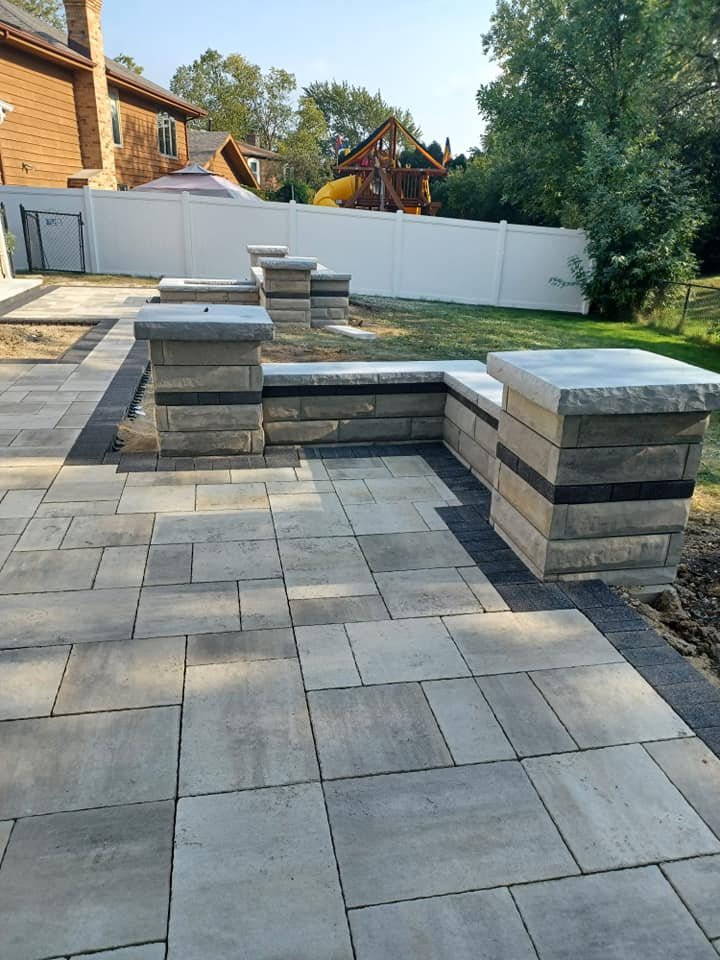Any time you consider the next move in your landscape renovation, start from the ground up. Making sure that your patio, pool deck, and walkways are all composed of beautiful and useful surfaces will set the stage for the quality of your outdoor experience, whether your focus is on entertaining, relaxing, or fun with the kids. Today’s pavers are high quality options that can bring tremendous style and practicality to your patio. Is it time to revamp your Lake Forest and Buffalo, IL backyard? Consider adding patio pavers.
Related: 5 Patio Pavers for Your Ranch Style Backyard Remodel in Highland Park and Northbrook IL Areas
Different Pavers for Different Spaces
Choose pavers rated for pedestrian use for the design of your patio, pool deck, and walkways. There are more fortified pavers in use for driveway applications since they can withstand the weight of cars: but they’re overkill for pedestrian surfaces, and more costly.
Choosing the right style is also important and it’s based on several factors: the style of your home; any existing hardscape features that you want to match or complement; the surrounding landscape; and your own personal design aesthetic.
Brick pavers are either traditional clay, or modern concrete. Both are extremely durable and long-lasting. The one benefit to concrete brick pavers is that you can get a wider range of colors and styles with concrete (since clay brick is limited to natural clay colors). The classic look of brick pavers will greatly complement any rustic or traditional architecture.
Pavers that mimic the look of natural stone are popular for several reasons: the cost can often be lower than natural stone; they come in precast shapes that can simplify installation; and they offer a broader range of colors than natural stone.
Modern pavers: modern paver technology has given manufacturers the ability to create pavers that are unabashedly modern. They don’t try to look like natural stone or brick. They embrace their concrete nature, which means the paver designers had free rein with creativity. Some pavers will incorporate natural stone particles and use special techniques to create interesting finishes like brushed finishes or silky, matte finishes that aren’t available in other formats.
Permeable Pavers
One of the major disadvantages of solid paved surfaces (including traditionally installed paver patios) is that water will either collect on the surface or slide off to the nearest edge and saturate the surrounding soil. Permeable paver technology combats this issue by allowing water to seep between the paver joints where it will absorb into a special substrate that disperses the water at a controlled rate into the groundwater system. This greatly reduces the risk of slipping hazards on your patio, pool deck, and walkways. It’s a self-protecting system that prevents the negative effects of the freeze and thaw cycles in fall and spring (such as frost heaves), prolonging the durability of your paved surfaces.
Non-Slip Surfaces
One of the biggest sources of injury at home is from slipping outdoors on paved surfaces. While permeable paver technology greatly reduces slipping hazards from standing water and ice formation, most patio pavers are designed to be non-slip, which makes them perfect fits for pool deck settings as well as patios and walkways near outdoor kitchens or under the eaves of a house. Even those that are considered “smooth” will have a subtle pebbled surface that helps improve grip, yet they remain barefoot-friendly.
Stain Resistant Sealants
While all pavers look great initially, they can still be damaged or stained by food, beverages, household or pool chemicals, or even deicing salts. Some pavers come pre-sealed but for those that don’t, it’s important to apply a stain-resistant sealant in order to protect their integrity.
Related: The Ins And Outs Of Maintaining Patio Pavers In Glenview And Highland Park, IL Areas


